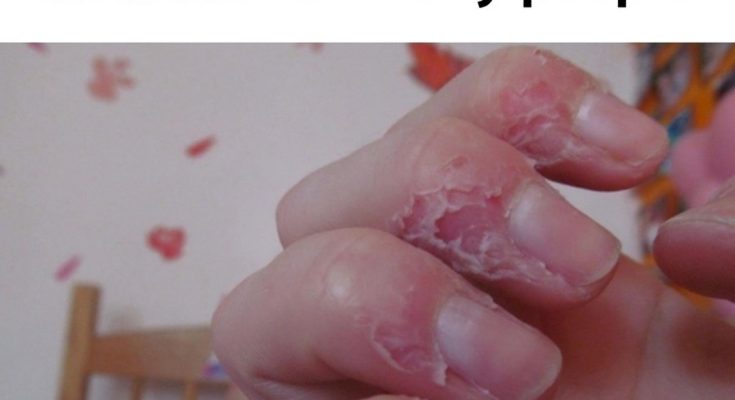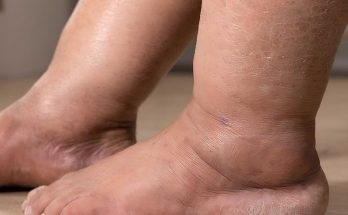Excoriation disorder, also known as skin-picking disorder or dermatillomania, is a chronic mental health condition that involves an uncontrollable urge to pick at one’s skin. This behavior can lead to visible skin damage and significantly impact daily life, causing both physical and emotional distress. While it often begins in adolescence, excoriation disorder affects people of all ages and is categorized as a body-focused repetitive behavior (BFRB). In this article, we will explore the causes, symptoms, and effective treatment options for managing this condition.

What Is Excoriation Disorder?
Excoriation disorder is characterized by repetitive skin-picking behavior that results in sores, scars, or other skin lesions. Individuals with this disorder may pick at healthy skin, blemishes, scabs, or calluses, often leading to open wounds. This condition is classified within the same family as obsessive-compulsive disorder (OCD) due to its compulsive nature. People with dermatillomania typically spend a considerable amount of time each day engaging in picking behaviors, which can interfere with daily activities and responsibilities.
Common Signs and Symptoms of Dermatillomania
While occasional skin-picking is not uncommon, those with excoriation disorder experience a compulsive urge that is challenging to control. The symptoms vary in severity but generally include:
- Recurrent Skin-Picking: Persistent picking at the skin, particularly on the face, arms, or legs, that leads to skin lesions or scars.
- Significant Time Spent on Picking: Many individuals with dermatillomania may spend hours daily picking their skin, often using their fingers, tweezers, or other tools.
- Attempts to Stop Picking: Frequent but unsuccessful efforts to reduce or stop the behavior, despite wanting to quit.
- Emotional Distress: Feelings of shame, guilt, or embarrassment related to the picking behavior and the resulting skin damage.
- Impact on Daily Life: Skin-picking may interfere with school, work, social activities, or relationships, leading to a reduced quality of life.
For a diagnosis, the skin-picking behavior should not be attributable to another medical or dermatological condition, such as scabies or eczema, and it should not be explained by another psychiatric disorder.
What Causes Excoriation Disorder?
The precise causes of excoriation disorder are not entirely understood, but research suggests that several factors may contribute to its development. These factors include:
Genetic Predisposition
People with excoriation disorder may have a genetic predisposition to the condition. Studies show that having a family history of skin-picking or similar BFRBs (such as trichotillomania, or hair-pulling) can increase the likelihood of developing this disorder.

Changes in Brain Structure
Research has found that individuals with excoriation disorder may have differences in the brain areas that control emotions, impulse regulation, and habit formation. These differences may lead to difficulties in stopping repetitive behaviors, like skin-picking.
Psychological Factors
Excoriation disorder is often associated with anxiety, stress, or emotional distress. Skin-picking can serve as a coping mechanism to alleviate feelings of stress or boredom. For some, it may be a way to channel nervous energy, while others may find it calming.
Risk Factors and Co-Occurring Conditions
Excoriation disorder frequently coexists with other psychiatric conditions. Recognizing and addressing these co-occurring conditions can improve treatment outcomes. Common conditions that occur alongside dermatillomania include:
- Obsessive-Compulsive Disorder (OCD): OCD shares many characteristics with excoriation disorder, such as compulsive and repetitive behaviors.
- Trichotillomania (Hair-Pulling Disorder): Many people with excoriation disorder also engage in trichotillomania, another body-focused repetitive behavior.
- Anxiety and Depression: These mental health disorders are prevalent among individuals with dermatillomania. Skin-picking can become a coping mechanism for those struggling with anxiety or depressive symptoms.
- Bipolar Disorder: The impulsive nature of dermatillomania can also manifest in individuals with bipolar disorder, particularly during manic or hypomanic phases.
- Nail-Biting (Onychophagia): Onychophagia is another BFRB that often co-occurs with skin-picking and may indicate similar underlying psychological issues.
Treatment Options for Excoriation Disorder

Managing excoriation disorder can be challenging, but several effective treatment approaches have been developed. These treatments aim to reduce skin-picking behavior and address underlying psychological factors that may be contributing to the disorder.
Cognitive-Behavioral Therapy (CBT)
CBT is a primary treatment option for dermatillomania and involves identifying the thoughts, feelings, and behaviors associated with skin-picking. Through CBT, individuals learn healthier coping mechanisms to replace the urge to pick at their skin. Two specific types of CBT are often used to treat excoriation disorder:
- Habit Reversal Training (HRT): This technique involves recognizing the triggers for skin-picking and developing alternative, less harmful habits. For example, someone might learn to squeeze a stress ball instead of picking.
- Comprehensive Behavioral Model (ComB): ComB is a tailored approach that helps identify the specific internal and external triggers that lead to skin-picking. It focuses on addressing sensory, cognitive, emotional, motor, and environmental factors to create a comprehensive treatment plan.
Medication
Medication can be effective in treating excoriation disorder, especially when it coexists with other conditions like OCD, anxiety, or depression. Selective serotonin reuptake inhibitors (SSRIs), a class of antidepressants, are commonly prescribed to help reduce the urge to pick. In some cases, other medications may be used to manage symptoms or address co-occurring disorders.
Mindfulness and Acceptance-Based Therapies
Mindfulness and acceptance-based therapies, such as Acceptance and Commitment Therapy (ACT), have shown promise in helping individuals manage excoriation disorder. These therapies encourage individuals to accept their urges without acting on them and to focus on their values and long-term goals. By improving emotional regulation, these therapies can reduce the frequency and intensity of skin-picking episodes.
Tips for Managing Dermatillomania at Home

While professional treatment is essential for managing excoriation disorder, there are several strategies individuals can practice at home to help reduce skin-picking behavior:
- Identify Triggers: Keep a journal to track situations, emotions, or environments that lead to skin-picking episodes. This can help in developing strategies to avoid or manage these triggers.
- Use Fidget Tools: Keep your hands busy with a stress ball, fidget spinner, or textured fabric. Redirecting the urge to pick toward a less harmful behavior can make a significant difference.
- Practice Self-Care: Engage in relaxing activities that reduce stress and anxiety, such as meditation, deep breathing, or yoga. A calm mind is less likely to resort to compulsive behaviors.
- Keep Hands Occupied: Engage in hobbies or tasks that involve the hands, such as knitting, painting, or cooking. Keeping your hands busy can reduce the urge to pick at the skin.
- Create a Support System: Share your goals and challenges with trusted friends or family members who can offer encouragement and accountability.
Conclusion: Seeking Help for Excoriation Disorder
Excoriation disorder is a challenging but manageable condition. With the right treatment and coping strategies, individuals with dermatillomania can reduce skin-picking behavior and improve their quality of life. Seeking professional support from a therapist, psychiatrist, or counselor experienced in treating body-focused repetitive behaviors is a crucial step toward healing. Remember, overcoming this disorder is a journey that takes time, but with persistence and support, it is entirely possible to regain control and achieve a healthier, more fulfilling life.



